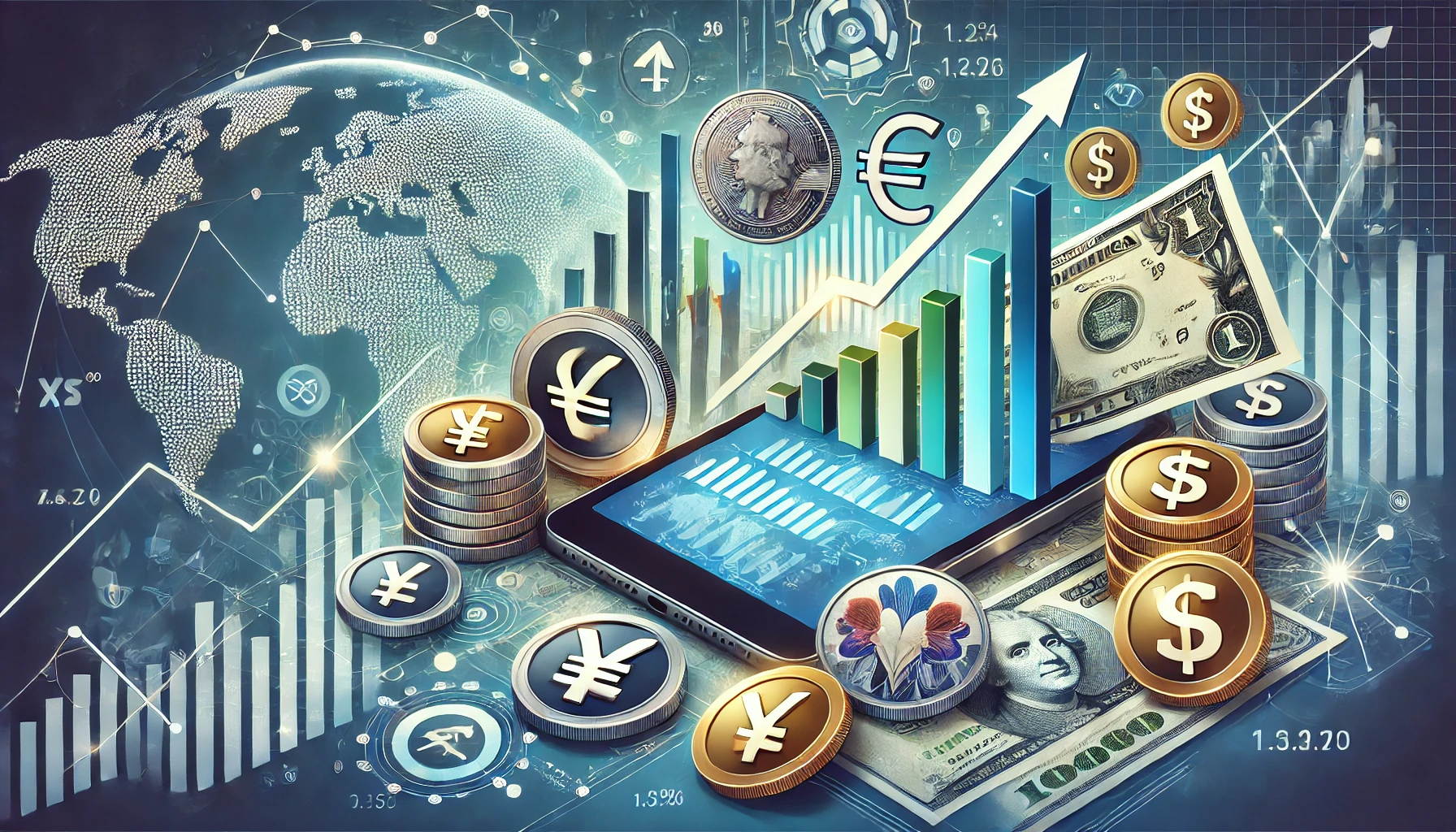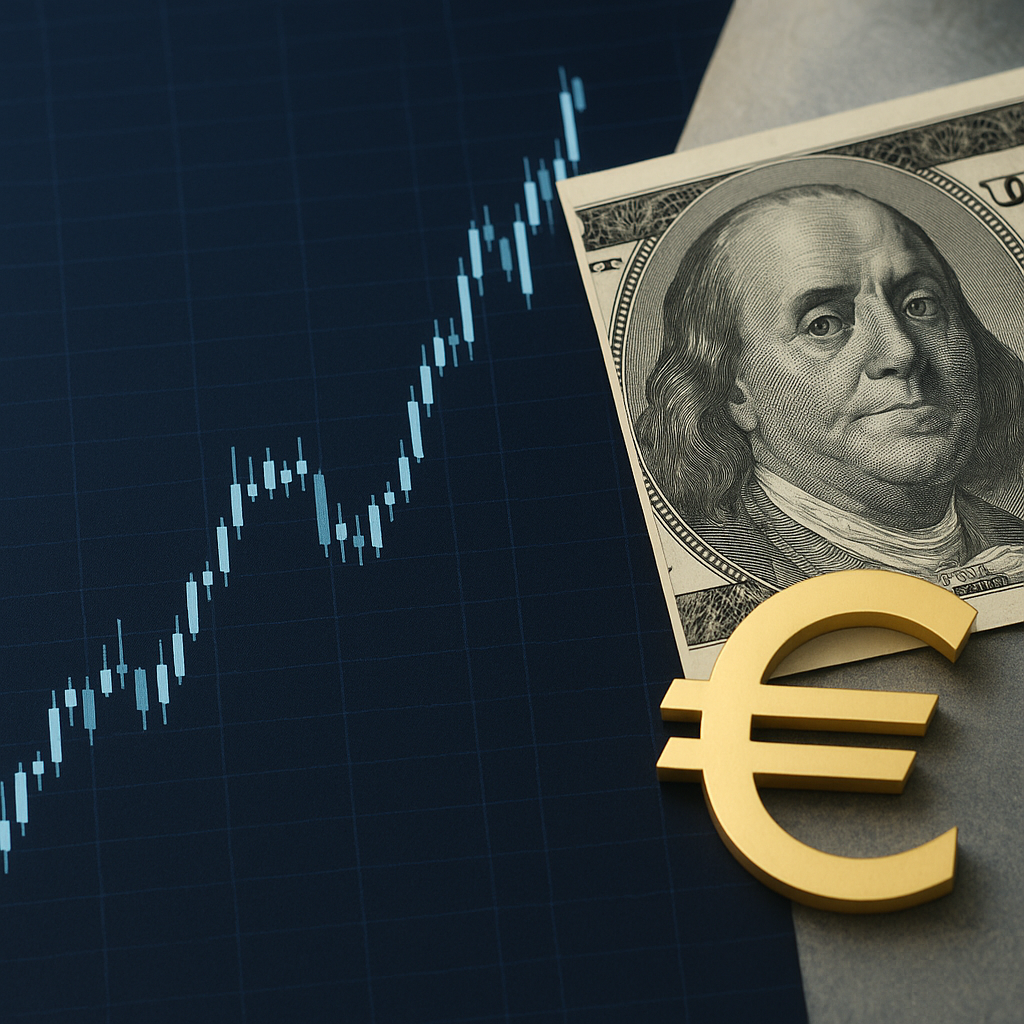The Future of Currency Pairs in an Increasingly Digital Global Market is a topic of growing importance as technological advancements and digital innovations continue to reshape the financial landscape. This article delves into the evolving dynamics of currency pairs, the impact of digital currencies, and the potential future scenarios for investors in the forex market.
The Evolution of Currency Pairs
Currency pairs have been a cornerstone of the global financial system for decades. Traditionally, these pairs have been influenced by factors such as economic indicators, geopolitical events, and central bank policies. However, the advent of digital technologies and the rise of cryptocurrencies are introducing new variables into the equation.
Traditional Influences on Currency Pairs
Historically, the value of currency pairs has been driven by a range of macroeconomic factors. These include interest rates, inflation rates, gross domestic product (GDP) growth, and employment figures. Central banks play a crucial role in this dynamic, as their monetary policies can significantly impact currency values. For instance, an increase in interest rates by the Federal Reserve can strengthen the US dollar against other currencies.
Geopolitical events also have a profound impact on currency pairs. Political instability, trade wars, and international conflicts can lead to significant volatility in the forex market. Investors often seek safe-haven currencies, such as the US dollar or the Swiss franc, during times of uncertainty.
The Rise of Digital Currencies
The emergence of digital currencies, particularly cryptocurrencies like Bitcoin and Ethereum, is adding a new dimension to the forex market. Unlike traditional currencies, cryptocurrencies are decentralized and operate on blockchain technology. This decentralization means that they are not subject to the same regulatory controls as fiat currencies, making them both an attractive and risky investment.
Cryptocurrencies have introduced a new level of volatility to the market. Their values can fluctuate wildly within short periods, driven by factors such as technological advancements, regulatory news, and market sentiment. For example, a positive announcement about blockchain technology can lead to a surge in cryptocurrency values, while regulatory crackdowns can cause sharp declines.
The Impact of Digital Innovations on Currency Pairs
As the world becomes increasingly digital, the forex market is undergoing significant transformations. Digital innovations are not only changing the way currency pairs are traded but also influencing their values in unprecedented ways.
Algorithmic Trading and AI
One of the most significant digital innovations in the forex market is the rise of algorithmic trading and artificial intelligence (AI). Algorithmic trading involves using computer programs to execute trades based on predefined criteria. These algorithms can analyze vast amounts of data at lightning speed, identifying trading opportunities that human traders might miss.
AI, on the other hand, takes this a step further by using machine learning to improve trading strategies over time. AI systems can analyze historical data, identify patterns, and make predictions about future price movements. This can lead to more accurate and profitable trading decisions.
However, the rise of algorithmic trading and AI also introduces new risks. These systems can sometimes exacerbate market volatility, as they can execute large volumes of trades in a short period. Additionally, the reliance on algorithms can lead to a lack of human oversight, potentially resulting in significant losses if the algorithms malfunction or make incorrect predictions.
Blockchain Technology
Blockchain technology, the backbone of cryptocurrencies, is also making its mark on the forex market. Blockchain offers a decentralized and transparent way to record transactions, reducing the need for intermediaries and increasing the efficiency of the trading process.
One of the most promising applications of blockchain in the forex market is the development of stablecoins. Stablecoins are digital currencies that are pegged to a stable asset, such as the US dollar or gold. This pegging reduces the volatility typically associated with cryptocurrencies, making stablecoins a more reliable medium of exchange and store of value.
Moreover, blockchain technology can enhance the security of forex transactions. The decentralized nature of blockchain makes it more resistant to hacking and fraud, providing a safer environment for traders.
Future Scenarios for Currency Pairs
As digital technologies continue to evolve, the future of currency pairs in the forex market is likely to be shaped by several key trends. Investors need to be aware of these trends to make informed decisions and capitalize on emerging opportunities.
Integration of Digital and Traditional Currencies
One possible future scenario is the increased integration of digital and traditional currencies. Central banks around the world are exploring the development of central bank digital currencies (CBDCs). These digital versions of fiat currencies could coexist with traditional currencies, providing a bridge between the old and new financial systems.
CBDCs could offer several benefits, including faster and cheaper cross-border transactions, increased financial inclusion, and enhanced monetary policy tools. However, their introduction also raises several challenges, such as ensuring privacy, preventing cyberattacks, and managing the transition from traditional to digital currencies.
Regulatory Developments
Regulation will play a crucial role in shaping the future of currency pairs. As digital currencies become more prevalent, governments and regulatory bodies are likely to introduce new rules and guidelines to ensure market stability and protect investors.
For instance, stricter regulations on cryptocurrencies could reduce their volatility and make them more attractive to institutional investors. On the other hand, overly restrictive regulations could stifle innovation and limit the growth of the digital currency market.
Investors need to stay informed about regulatory developments and understand their potential impact on currency pairs. This will enable them to navigate the evolving landscape and make strategic investment decisions.
Technological Advancements
Technological advancements will continue to drive changes in the forex market. Innovations such as quantum computing, big data analytics, and the Internet of Things (IoT) could further enhance the efficiency and accuracy of trading systems.
Quantum computing, for example, has the potential to revolutionize the forex market by solving complex calculations at unprecedented speeds. This could lead to more accurate predictions of currency movements and more efficient trading strategies.
Big data analytics can provide traders with deeper insights into market trends and investor behavior. By analyzing vast amounts of data from various sources, traders can identify patterns and make more informed decisions.
The IoT can also impact the forex market by providing real-time data on economic indicators, geopolitical events, and other factors that influence currency values. This real-time data can help traders react more quickly to market changes and capitalize on emerging opportunities.
Conclusion
The future of currency pairs in an increasingly digital global market is full of opportunities and challenges. The rise of digital currencies, advancements in technology, and evolving regulatory landscapes are reshaping the forex market in unprecedented ways. Investors need to stay informed about these trends and adapt their strategies to navigate the changing landscape.
By understanding the impact of digital innovations, staying abreast of regulatory developments, and leveraging new technologies, investors can position themselves for success in the future forex market. The key to thriving in this dynamic environment is to remain flexible, informed, and proactive in responding to emerging trends and opportunities.




